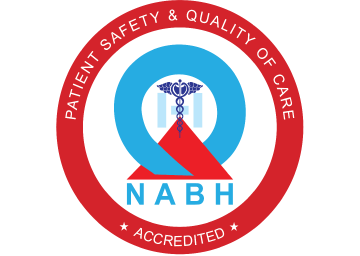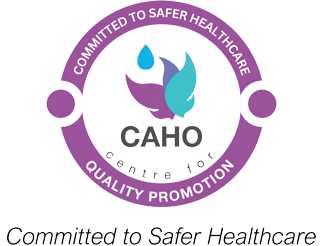Rhinoplasty
What is rhinoplasty?
- Rhinoplasty is a surgical procedure that alters the nose's size or shape, making the nose and face look better and helps correct breathing problems.
Why is rhinoplasty done?
- The nose's shape and size can be commonly altered after an accident, congenital disabilities such as cleft lip and palate, or can be simply done for cosmetic reasons. A rhinoplasty commonly corrects the following problems.
- Dorsal hump of the nose
- The collapse of the dorsum of the nose
- Boxy or bulbous tip of the nose
- Deviated (Tilted) noses that are not straight
- Irregular nostril sizes
- Breathing difficulties due to deviated nasal septum
What is done when the patient consults the doctor before surgery?
- We would like to meet the patient before surgery to precisely understand the patient's desires, how we can fulfil the patient's expectations, what the surgery would entail, the postoperative recovery and the risks and complications associated with this procedure. We would also ask some questions regarding the patients general health to ascertain the fitness to undergo the procedure. We believe in being very transparent. We also do not pressurise anyone to undergo the procedure as we feel that the decision to undergo the procedure should only be the patient's decision. We are only there to help you make the decision and help you achieve your expectations. We may take photographs so that we can compare the results before and after surgery. We may take few blood tests and any other test that would be necessary for fitness during surgery.
How is rhinoplasty done?
- Rhinoplasty is done under general anaesthesia. The patient will not have any pain during the procedure and will not be aware of what is happening during the procedure as they will be sedated. A small incision is made in the base of the nose. This incision mark is usually not visible as it is not easily seen. The other incisions are made within the nose. The soft tissue enveloping the nose is lifted, revealing the bones and cartilages of the nose. Necessary changes are made in the bones and cartilage to give a straight dorsum of appropriate length, correct any deviations in the septum and the nose's tip. In some instances, extra cartilage may be required to correct the deformities in the nose. In that case, we may have to harvest cartilage from the rib. A horizontal incision is made in the chest just below the breast, and the rib cartilage is harvested. After the necessary changes are made in the bones and cartilages of the nose, the skin is sutured back in place. To prevent any bleeding, the nostrils in the nose may be packed. We usually leave the packs within the nose for two days and later remove them. We protect the nose with a splint over the nose.
Who is a good candidate for rhinoplasty?
- A person is a good candidate for rhinoplasty if he/she knows exactly what they want to be improved. When we clearly understand what the patient wants, it is easy to address the problem. This is the reason why we feel that consultation with the doctor before surgery is very important. We will discuss what we can achieve after surgery during the consultation and what we may not achieve after surgery to have realistic expectations. If we believe that we may not achieve the patient's expectations after surgery, we might not do the surgery. Besides, rhinoplasty is to be done for healthy, stable patients. If the patient has any comorbidities, we should correct them before surgery. Rhinoplasty is to be done for patients after 17 years so that their facial development is complete. It is also essential that the patients stop smoking before surgery.
How does one recover after rhinoplasty?
- After rhinoplasty, we encourage the patient to breathe through the mouth as the nose's nostrils will be packed. Painkillers will be given to reduce the pain and keep the patient comfortable. The patient can take semisolid diet in the evening and the next day. Once the patient is comfortable, the patient can take solid food by the second day after surgery. The packs in the nose will be removed in 48 hours. Patients can go home as soon as they are comfortable. Most of our patients prefer to go home after 48 hours once their packs in the nose are removed.
What advice is given to patients after rhinoplasty?
- Keep the head elevated with two pillows. This will reduce oedema and swelling in the face.
- Patients may have swelling of the face and the nose initially. The swelling generally reaches its peak in 48 to 72 hours and then reduces. Most of the swelling goes away by 2 to 3 weeks after surgery. There can be mild oedema in the tip of the nose in some people for as long as one year after surgery.
- Avoid strenuous activity and lifting heavy weights for three weeks
- Avoid any form of trauma or injury to the nose for four weeks.
- The tip of the nose and the front of the teeth may feel different initially for a few weeks in some people. The sensations will come back within a few weeks, so one needs not to be stressed about it.
- Avoid wearing heavy glasses on the nose for at least four weeks after surgery. If one needs to wear glasses, one should temporarily tape the glasses to the forehead. Contact glasses can be worn as soon as the patient is comfortable.
- There can be mild bleeding from the nose and is usually collected blood, and one need not be concerned if the dressing shows mild soakage. However, if the bleeding is continuous, then it is better to inform the doctor. As we generally pack the nostrils after surgery and as we take care to stop the bleeding before surgery, the chances of bleeding after surgery are very less.
What are the risks and complications after a rhinoplasty?
- We take a lot of effort to reduce the complications or undesired effects after surgery. But still, with all our efforts, there can still be some side effects like
- Persistent Edema :
After rhinoplasty, most of oedema and swelling of the face reduces by 2 to 3 weeks. The oedema continues to reduce with time. This happens in about 95% of people. In some patients, they may continue to have swelling, especially in the tip of the nose, for as long as one year after surgery. In such cases, we may give steroid injections to reduce oedema and swelling.
- Not satisfied with the result
Achieving a good result in rhinoplasty involves understanding the patient's expectations, the surgical procedure, and healing the patient's wounds. We try to get good results by speaking to our patients elaborately and understanding their needs and expectations. We plan what we would need to do to meet the expectations and try to fulfil them to the best of our ability. However, in some cases, the cartilage grafts that we place may change shape or may even get absorbed. In some cases, the scar's contraction while healing may change the way the nasal bones and the cartilage are aligned. We usually allow the nose to heal well. We assess the nose only after six months. We again discuss with the patient and try to understand what they like and what they didn't like. We then can go ahead and do another rhinoplasty procedure. Although not common, we can still correct any problem that the patient is not satisfied with.
- Bleeding
The nose is a very vascular structure. We undertake many steps to reduce and control bleeding like injecting medicines to reduce the bleeding, cauterising bleeding points, and packing the nose after surgery, which controls bleeding even if it does bleed. The chances of bleeding is significantly less. There can be some minor soakage of dressings after surgery. This is not of major concern. However, if it does bleed profusely, the doctor should be informed. As the hospital is covered by full-time anaesthetists and senior plastic surgeons 24x7, we will pack the nose again and control the bleeding. This is the advantage of being treated at a hospital.
- Septal Perforation
There can be a hole in the septum of the nose which separates both the nostrils. Most septal perforations do not need any treatment unless they produce any symptoms.




